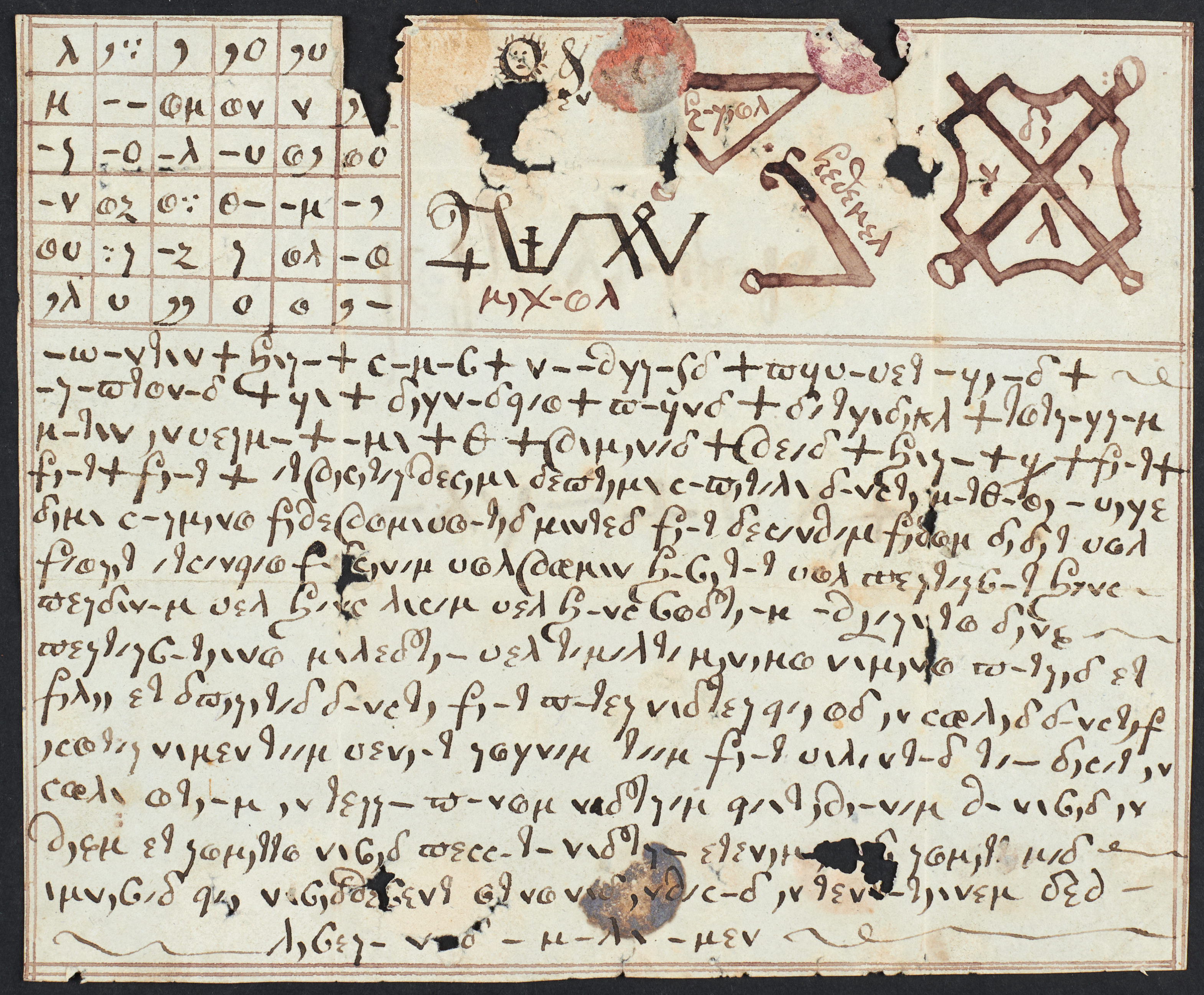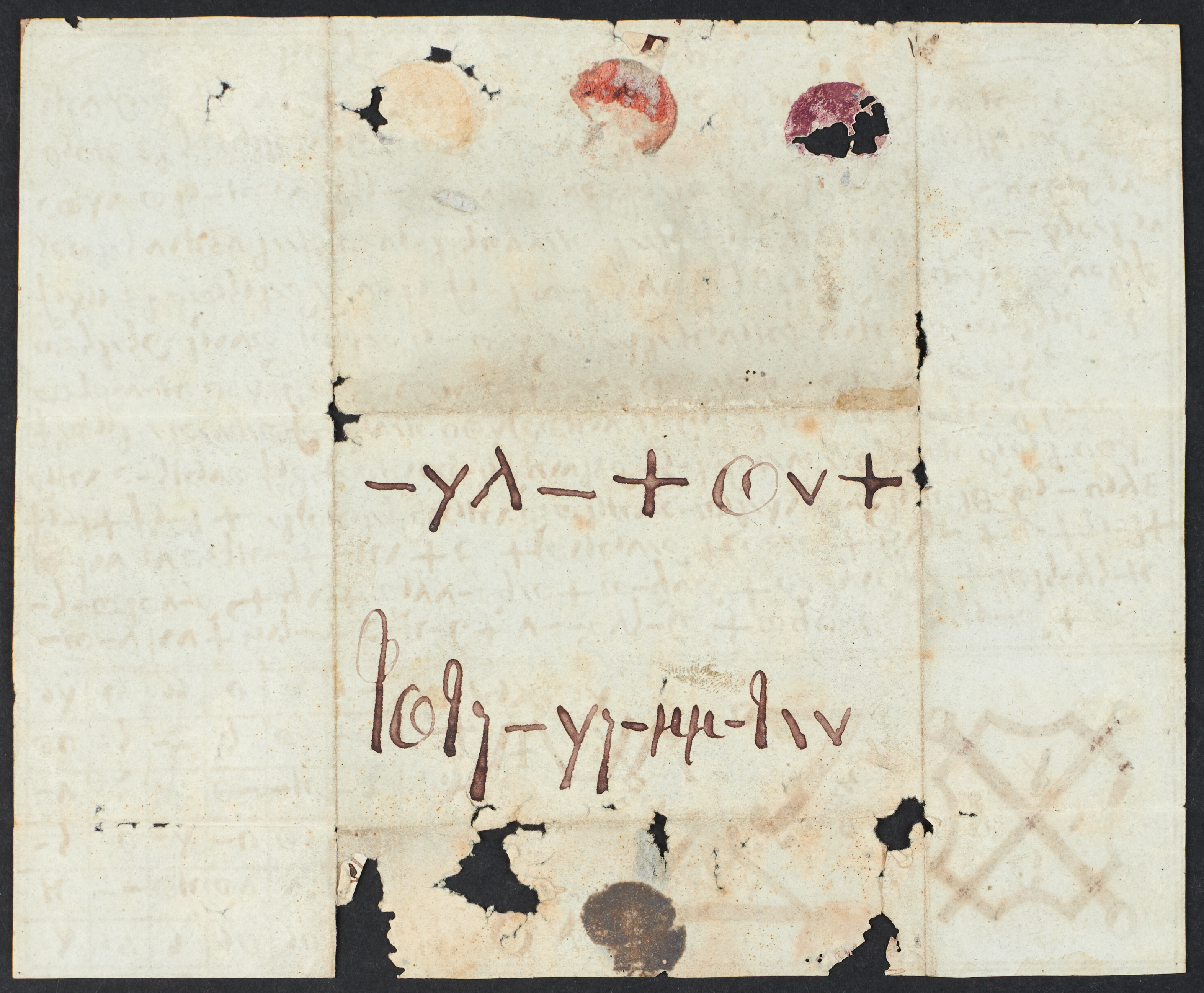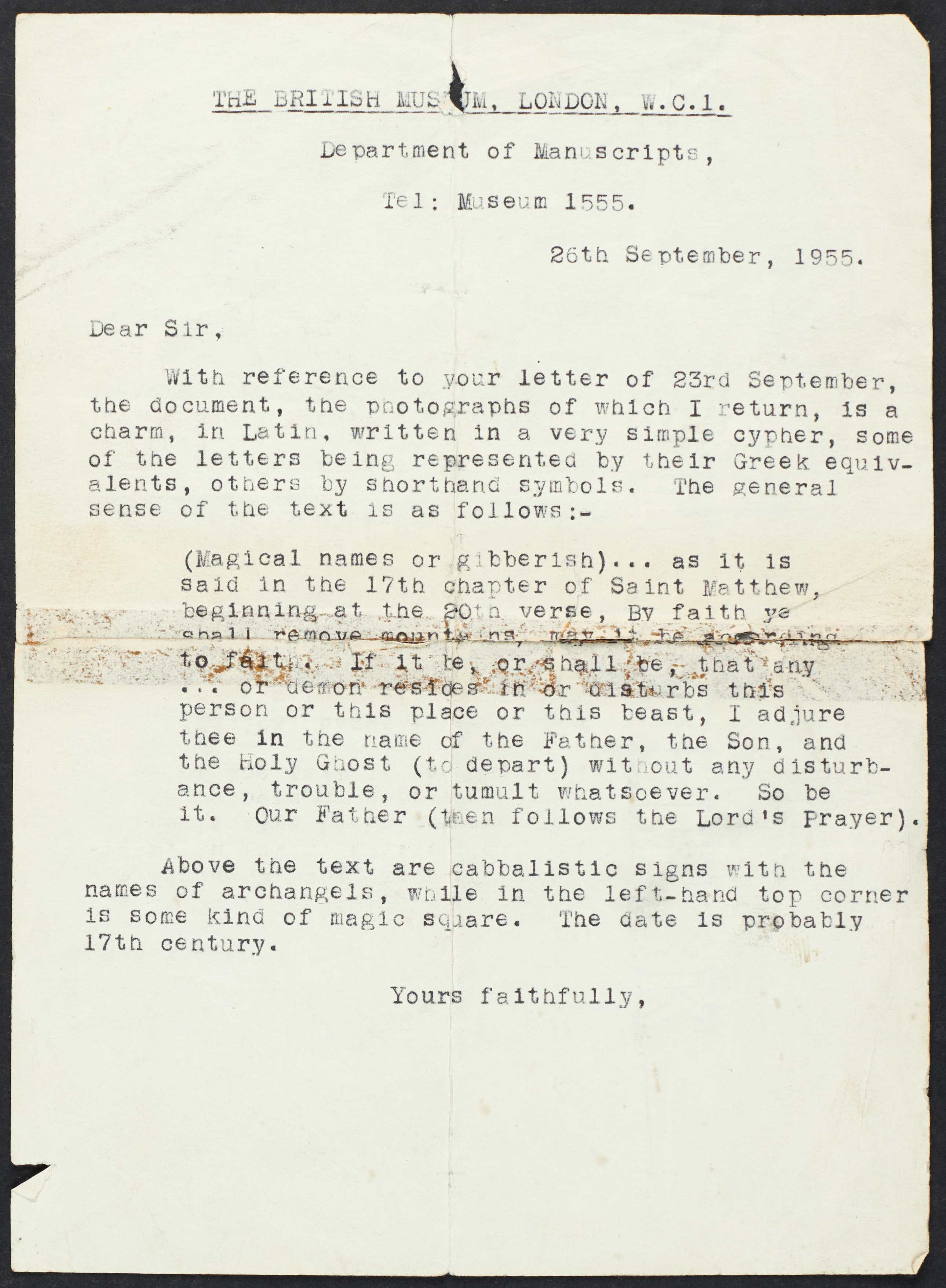Witch Charm
Description
It may seem strange to us today, but the widespread and very real belief in witches has been part of Lancashire folklore for generations. Just as engrained is the belief that charms and amulets can in some way protect against evil. We are perhaps familiar with the 'lucky horseshoe' hanging in a stable, but other items like hag-stones, children's shoes, cups, and serving vessels have all been cited as having the power to ward off unwelcome spirits.
These occasionally come to light today in the fabric of buildings under floorboards or built into walls and chimneys. The simple act of hanging a charm over an entrance or window, often accompanied by a written incantation, was seen as a way of warding off evil spirits and preventing them entering. A great account can be found in our museum blog series 'Stories from the Lancashire Museums' Protection Against Witchcraft – Stories from Lancashire Museums (www.wordpress.com)
The most famous Lancashire connection with witches is of course the Lancashire witch trials of 1612, a story steeped in superstition, fear, and revenge. A tale of village politics, of two feuding families, and of poor unfortunate victims. In this infamous case 10 were found guilty of witchcraft and hanged. Another of the 'Stories from the Lancashire Museums' Gawthorpe Hall and Witches in Lancashire (Part One) – Stories from Lancashire Museums (www.wordpress.com) tells the story of the trials from the contemporary stance of the Shuttleworth accounts at Gawthorpe Hall.
Why not visit the site of the historic trials of 1612 at Lancaster Castle, the Lancashire folklore and legend room in Clitheroe Castle Museum, and the new exhibition 'An Account of Life' at Gawthorpe Hall to find out even more.
On display
50 Objects Exhibition at Helmshore Mills Textile Museum 6 June - 31 October 2025. Search www.lancashire.gov.uk for Helmshore Mill opening times.



